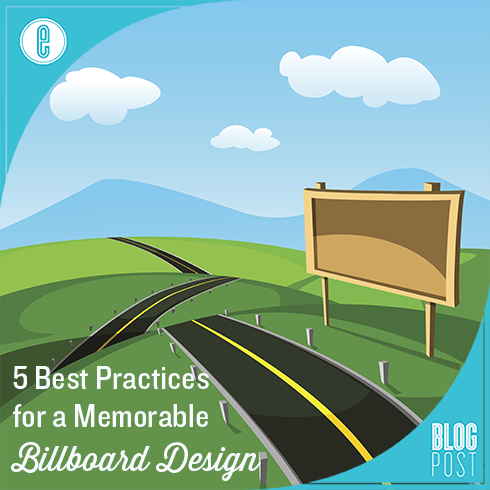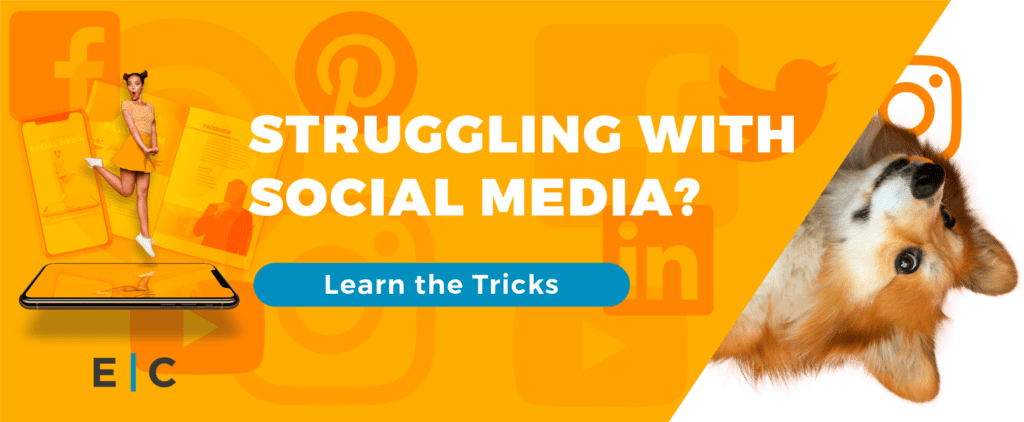
Even with the growth of technology and online marketing, the billboard continues to play an important component as a marketing tool. As a physical marker that thousands of people can see daily, it can hold great potential in exposing your company and product to potential buyers–if designed properly. Here are 5 methods to perfect your billboard design for maximum exposure:
1. Keep it simple
Less is more, especially when it comes to billboards. If a driver going 70 miles per hour on the highway sees a wordy billboard, that driver will leave your message in the dust without a second thought. The same could be said for an electric billboard in the middle of your city; a passerby will not stop to read an advertisement, no matter how flashy the board is. Keep any phrases simple and to the point by focusing on impactful visuals, colors, or words themselves.
While most billboards use a single photographed element for visual impact, text by itself can also become a smart design tool. With few words, you can let typography and language become a key element in your design. Think about famous campaigns that ran on an iconic type face and phrase, such as “Got Milk?”; the ad is simply known for its white font on a black background and the two words asking a simple yet intriguing question. It generated conversation and action, and just from two simple words. This type of design is effective on billboards: it’s clear, easy to read from near and far, and most importantly, easy to remember.
2. Make it visually memorable
Noteworthy billboard designs are known for their shock factor; they incorporate a surprising visual element that leaves an impression. Usually, the surprise comes from elevating the mundane into the extraordinary. As exemplified in these 40 brilliant billboards, each billboard takes a simple element–the product–and enhances it with clever optical illusions, uncommon design elements, and humorous positions. The product then becomes memorable not from it standing alone as a photo, but because of how it’s used as a prop within a design.
To recreate these smart design ideas, experiment with different shapes for your billboard, or by incorporating 3D props and materials. Many creative billboard designs incorporate the space and structure outside of the traditional billboard canvas. Craftsman’s Wrench billboard, for example, turns the board’s support pole into a wrench and hand, extending the design beyond the advertisement space.
3. Present a call-to-action
Good advertisement leads to conversion and engagement, and a billboard is no different. Clever slogans like “Eat More Chikin” by the Chick-fil-A cow can entice audiences to do just that when they see that billboard pointing to the nearest highway exit. When creating a billboard, think of ways that will lead people to immediate engagement. If your product cannot easily lead to a quick detour, try creating suspense or curiosity that will lead a person to your website, following your company on social media, or making a phone call to your staff.
If your company or product is destination-specific, consider using billboards as a roadmap to your physical location. For example, The South of the Border billboards lining I-95 through South and North Carolina are memorable because of their campy icons, puns, and the sheer number of them in each direction. Each one counts down the miles to the roadside attraction, making them unforgettable to any traveler on the interstate. Designing these types of destination billboards can create anticipation, especially for travelers heading your way.
4. Provide a demonstration
Designing a billboard to include a demonstration of the product can dramatically improve its look. One way to incorporate a demonstration in your design is by using the weather, like when this billboard used rain to encourage safe driving: during a storm, the photograph of a child changed dramatically as a signal to drivers to think twice about their driving habits during poor conditions.
Think about your product’s function, put it to use on the actual billboard. For example, a paint company might showcase its durability by painting a part of the billboard so that it will stand out as other unpainted parts fade away. If you can prove your product’s worth on the billboard itself, you’re more likely to make an impact on the viewer.
5. Make it consistent.
It is easy to look at a billboard and think of it as a clean slate for another marketing plan, but think of how your billboard design fits your larger marketing puzzle: is it consistent with your overall marketing strategy? Does it match similar advertisements in newspapers, magazines, online, or on TV? Sometimes the best billboard designs allow audiences to remember it in relation to your logo or brand in another context. Having the continuity between your different advertising outlets is just as important as the advertisements themselves.
Billboards are not dead. As long as people are driving on public roads, billboards will be an important part of advertising. Make sure you’re taking full advantage of this potential by following these 5 best practices.
-FINAL(01-00)-White&Blue-01.svg)




